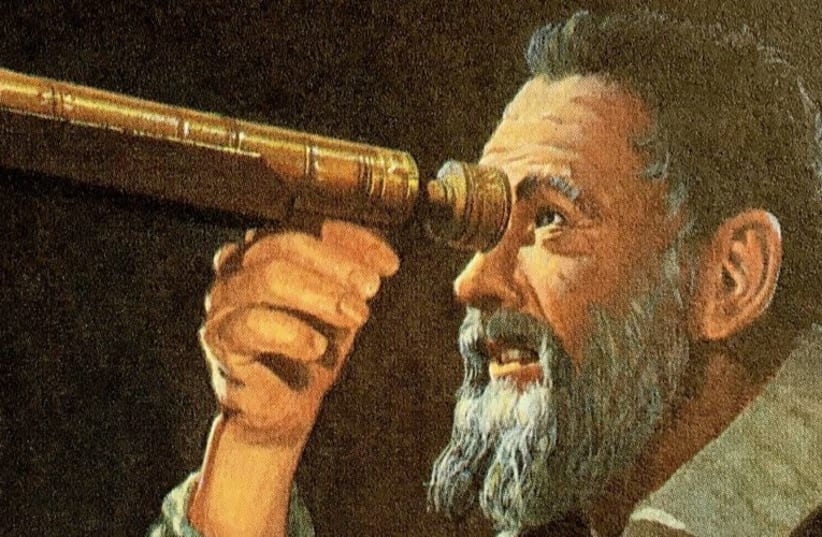The possible existence of aliens is one of the most intriguing subjects on the fringe of military and scientific communities, and has become more mainstream in recent years. But now, a groundbreaking scientific initiative is creating a unified telescope network to see if mankind is truly not alone in the universe.
Dubbed the Galileo Project, it is the brainchild of Israeli scientist Prof. Avi Loeb of Harvard University’s Astronomy Department, a leading scientific voice for the possible existence of alien life.
While traditional SETI (Search for Extraterrestrial Intelligence) efforts have often focused on either finding less-intelligent life or detecting radio waves, Loeb has taken a different approach: cameras and garbage.
“The idea is to use a new network of telescopes and cameras to collect data into a computer system so we can analyze it, spot notable phenomena and track it,” he explained to The Jerusalem Post.
In 2017, the first-ever discovered interstellar object was observed in our solar system. Dubbed ‘Oumuamua, (traveler in Hawaiian) this object was unlike anything ever seen before: flat and lacking a comet’s tail. But Loeb believes it moved like a light sail, sunlight giving it momentum.
Astronomers only got a glimpse at ‘Oumuamua on its way out. If they’d had a system of telescopes and cameras, these questions could have been answered already.
Four years later, its nature is still debated, with some calling it a construct made entirely of nitrogen.
But Loeb thinks we cannot discount the possibility that it was artificial. Not that it was a spaceship, but any number of possibilities remain, such as it being garbage. But garbage is a theoretical smoking gun, as it can’t be made naturally. It would be proof of the existence of an ETC (Extraterrestrial Civilization).
This focus fuels Loeb’s approach, which he dubs astro-archaeology.
Nothing like this has ever been attempted in SETI; surprisingly, it’s only been in the works for a few weeks.
Earlier this year, Loeb published his book on ‘Oumuamua and was featured in articles and on television and podcasts. And this brought the attention of donors.
“A few weeks ago, a few people I had never met before came up to me and offered me funding with no questions asked,” Loeb recounted.
“I first heard through Harvard that I suddenly had a new research fund. I never heard of the donors, but they funded me because they heard about my research,” he said. “Then a multi-billionaire came to me and asked about my research.”
He had over $1 million in funds after a week, and could now finally do what he wanted: gather data himself.
“The Pentagon recently released the UAP (Unidentified Aerial Phenomenon) report to Congress, and showed many incidents that have no explanation,” Loeb explained. “The public is very interested, but scientists forgot about it after a few days. But now I have the money to get data myself.”
The technology is actually simple. Rather than using powerful building-sized telescopes, the project will use a network of medium-sized telescopes with cameras and computers in select locations around the world.
“We actually need smaller telescopes,” Loeb explained. “The bigger ones have a narrower field of view; these have a wider field. We’re talking, with my current funds, 10 to 50 telescopes, depending on the details.”
There is no official timetable yet for the project, but it could possibly see results by 2023.
The most crucial aspect of it, however, is that it’s purely scientific, without political or military involvement. The project is open data, so its findings won’t be censored like a military or government intelligence study.
“You wouldn’t ask a plumber to bake a cake, so we shouldn’t ask politicians, generals and security advisers to tell us about space,” Loeb added.
But even if the scientists fail to find evidence of ETCs in these phenomena, they will still be able to gather new data about them that could help us further understand how the universe works.
“Is ‘Oumuamua a nitrogen iceberg? Maybe, but that isn’t something that can form naturally as far as we know,” Loeb explained. “But if we see more like it, then we know these can actually form naturally outside the solar system.”
If just one of these kinds of objects would be found, it could change everything. That is the meaning behind the project’s name, inspired by 17th century astronomer Galileo Galilei, who pioneered using telescopes in astronomy and discovered Saturn’s rings and Jupiter’s moons – the first satellites found to orbit something other than Earth, which also proved the heliocentric model of the solar system.
“Galileo complained that some of the philosophers who opposed his discoveries had even refused to look through his telescope,” Loeb said, recalling a popular anecdote about the astronomer. “Let us not repeat their mistake.”
